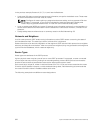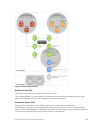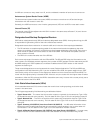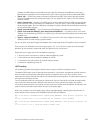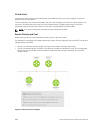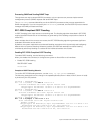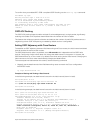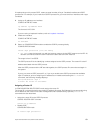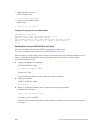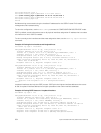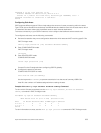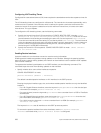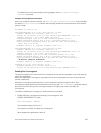
Configuration Information
The interfaces must be in Layer 3 mode (assigned an IP address) and enabled so that they can send and
receive traffic. The OSPF process must know about these interfaces.
To make the OSPF process aware of these interfaces, they must be assigned to OSPF areas.
You must configure OSPF GLOBALLY on the system in CONFIGURATION mode.
OSPF features and functions are assigned to each router using the CONFIG-INTERFACE commands for
each interface.
NOTE: By default, OSPF is disabled.
Configuration Task List for OSPFv2 (OSPF for IPv4)
You can perform the following tasks to configure Open Shortest Path First version 2 (OSPF for IPv4) on
the switch. Two of the tasks are mandatory; others are optional.
• Enabling OSPFv2 (mandatory)
• Assigning a Router ID
• Enabling Multi-Process OSPF
• Assigning an OSPFv2 Area (mandatory)
• Enable OSPFv2 on Interfaces
• Configuring Stub Areas
• Configuring LSA Throttling Timers
• Enabling Passive Interfaces
• Enabling Fast-Convergence
• Changing OSPFv2 Parameters on Interfaces
• Enabling OSPFv2 Authentication
• Configuring Virtual Links
• Creating Filter Routes
• Applying Prefix Lists
• Redistributing Routes
• Troubleshooting OSPFv2
1. Configure a physical interface. Assign an IP address, physical or Loopback, to the interface to enable
Layer 3 routing.
2. Enable OSPF globally. Assign network area and neighbors.
3. Add interfaces or configure other attributes.
For a complete list of the OSPF commands, refer to the OSPF section in the Dell Networking OS
Command Line Reference Guide document.
Enabling OSPFv2
To enable Layer 3 routing, assign an IP address to an interface (physical or Loopback). By default, OSPF,
similar to all routing protocols, is disabled.
You must configure at least one interface for Layer 3 before enabling OSPFv2 globally.
630
Open Shortest Path First (OSPFv2 and OSPFv3)



